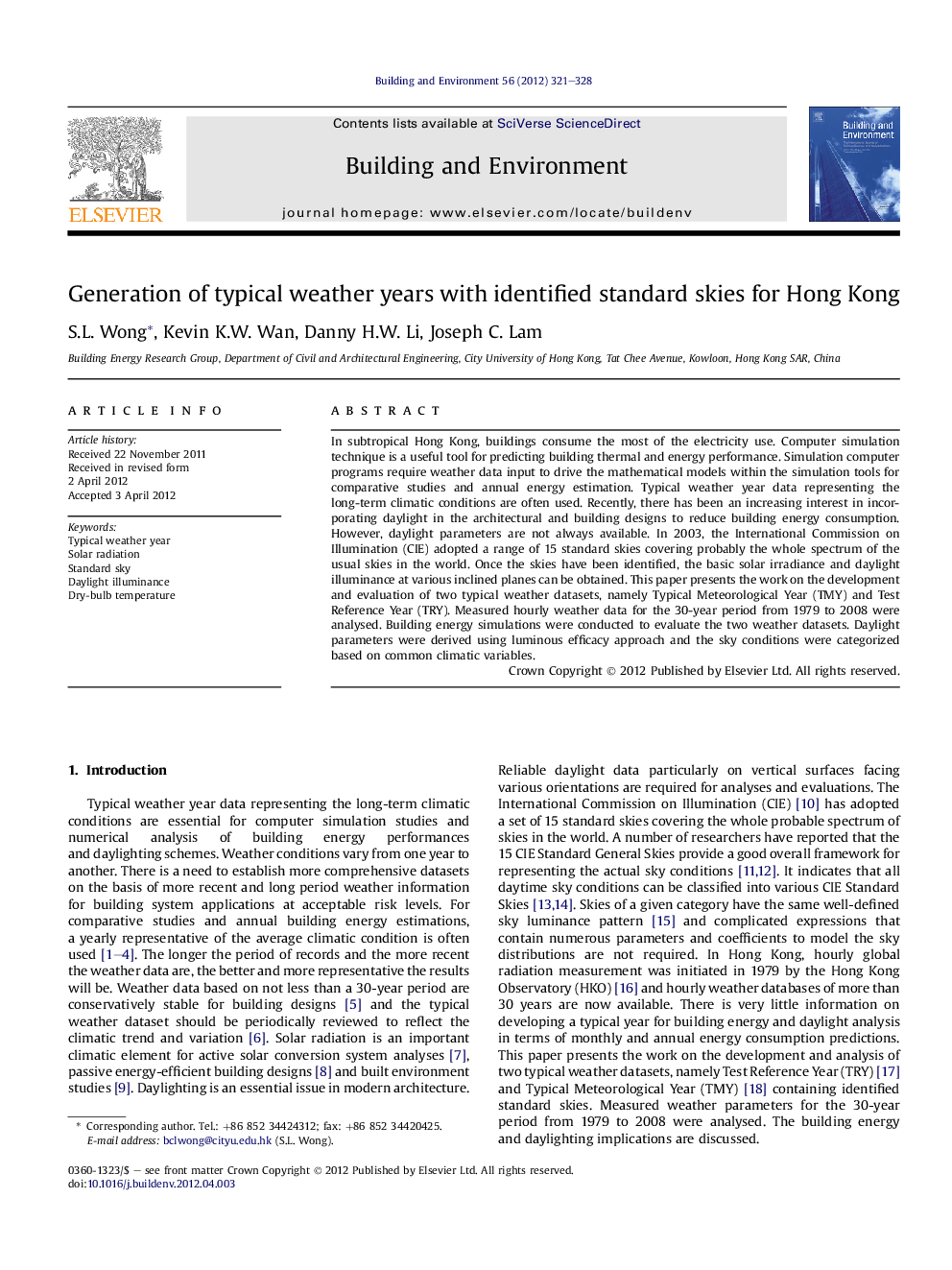| Article ID | Journal | Published Year | Pages | File Type |
|---|---|---|---|---|
| 248469 | Building and Environment | 2012 | 8 Pages |
In subtropical Hong Kong, buildings consume the most of the electricity use. Computer simulation technique is a useful tool for predicting building thermal and energy performance. Simulation computer programs require weather data input to drive the mathematical models within the simulation tools for comparative studies and annual energy estimation. Typical weather year data representing the long-term climatic conditions are often used. Recently, there has been an increasing interest in incorporating daylight in the architectural and building designs to reduce building energy consumption. However, daylight parameters are not always available. In 2003, the International Commission on Illumination (CIE) adopted a range of 15 standard skies covering probably the whole spectrum of the usual skies in the world. Once the skies have been identified, the basic solar irradiance and daylight illuminance at various inclined planes can be obtained. This paper presents the work on the development and evaluation of two typical weather datasets, namely Typical Meteorological Year (TMY) and Test Reference Year (TRY). Measured hourly weather data for the 30-year period from 1979 to 2008 were analysed. Building energy simulations were conducted to evaluate the two weather datasets. Daylight parameters were derived using luminous efficacy approach and the sky conditions were categorized based on common climatic variables.
► Typical weather year represents the long-term climatic conditions. ► TRY and TMY contains identified standard skies from 30-year weather data. ► Building energy simulations were conducted to evaluate the two weather datasets. ► Daylight parameters were derived using luminous efficacy approach. ► The sky conditions were categorized based on common climatic variables.
